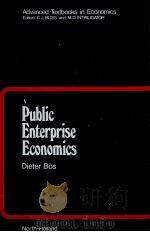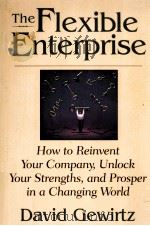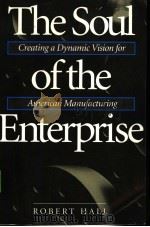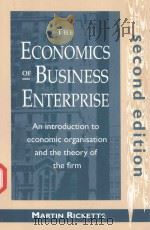《The Economics of Enterprise》
| 作者 | 编者 |
|---|---|
| 出版 | The Macmillan Company. |
| 参考页数 | 544 |
| 出版时间 | 1913(求助前请核对) 目录预览 |
| ISBN号 | 无 — 求助条款 |
| PDF编号 | 812589248(仅供预览,未存储实际文件) |
| 求助格式 | 扫描PDF(若分多册发行,每次仅能受理1册) |

CHAPTER ⅠFUNDAMENTAL CONDITIONS:MAN AND ENVIRONMENT1
Income(product)comes from men and their possessions,and consists of goods1
and is limited by consumption2
not derived from standard of living nor determined by desires3
nor by volume of money4
inevitably twofold in origin—men and environment5
difference of environments in effect on income6
differences in men—in strength and industriousness7
in knowledge8
in morality8
in institutions9
interactions between men and environment11
take place mostly in the human factor13
in any case are mostly due to intelligence13
but are confined within narrow limits15
conditions determining relative supplies of goods17
summary18
CHAPTER ⅡCOMPETITIVE ECONOMICS;THE RéGIME OF PRICE19
Institutions change19
competition a present institution20
its characteristic traits20
price its central characteristic21
pervasiveness of price22
criteria of definitions25
economics defined26
summary26
CHAPTER ⅢTHE RéGIME OF PRICE(Continued)28
Price the pivotal point in all economic competitions28
and in distribution28
but only so in the competitive order29
the classifications and generalizations of which must conform to the nature of this order29
but must avoid appraisals29
or any assumption of permanency or merit in the facts treated30
human desires common to all economic systems31
summary31
CHAPTER ⅣSPECIALIZATION AND TRADE RELATED TO MONEY33
Specialization imposes interdependence and promotes efficiency33
isolation and independence imposing inefficiency for the individual34
and for nations36
specialization possible in the competitive order only through trade,and trade practicable only through intermediates37
barter itself connoting multiplicity of media38
not goods but money competitive demand for goods39
value being mostly restricted to the price form39
summary40
CHAPTER ⅤTHE ADJUSTMENT OF PRICE42
The view of the outsider42
of the insider43
of the economist44
unreserved supply against one demand45
against several46
supply with reservation prices47
graphs48
reservation prices as holdersdemands50
goods demands for money51
utility related to demand51
logic of the marginal analysis53
price fixed not by averages,or by demand solely,or snpply solely,or by margins,or by marginal pairs54
summary54
CHAPTER ⅥSUPPLY DETERMINED BY COST OF PRODUCTION57
Price affects purchases57
supply affects price57
costs of production affect supplies relatively to one another,as an expression of specialization of production58
supplies dependent upon choice of sacrifice—sacrifice being expressed as cost59
alternative opportunities costs60
what sacrifice cost includes61
opportunity cost the leading collectivist category62
as also a competitive cost63
cost as reservation price64
supply limited at marginal cost64
the marginal analysis64
marginal cost in relation to opportunity65
various cost bases67
ones own possessions and cost67
a typical cost account68
cost a forward-looking computation based on past experience and affecting future product69
includes all resistances under the price denominator70
cost and supply vsdemand71
cost as expressing resisting demands72
the focusing point of many influences bearing upon the entrepreneur74
which the economist must investigate,rather than the entrepreneur75
marginality personal rather than instrumental77
the marginal enterprise78
marginal discomfort79
other margin-determining influences80
the limited significance of marginality82
pains and their significance82
summary83
CHAPTER ⅦUTILITY;DEMAND;DEMAND WITH SUPPLY85
Price everywhere determined by demand and supply and changed by changes in either or both85
no demand without utility85
which is desiredness—changing as desires change86
a relation to a human being and in this sense solely a quality87
no demand without marginal utility88
marginal utility discussed89
therefore no demand without scarcity91
not marginal utility alone but a comparison of marginal utilities,subjective valuation,gives demand91
a marginal demand indicating an equality ratio between alternative marginal utilities93
neither marginal demand nor marginal price fixes price,nor both together94
all items,marginal and other,participating95
intramarginal higgling96
all utility,marginal and other,purely individual—social utility irrelevant97
utility,marginal utility,and comparison necessary to explain demand97
neither of which excludes impulse or habit,or instinct98
or involves a hedonistic theory of desire,or any necessary relation to pleasure and pain99
or even always deliberation and calculation100
the nature and limits of abstraction and generalization100
summaries103
CHAPTER ⅧTHE SIGNIFICANCE OF Co8T OF PRODUCTION106
Entrepreneur cost not ultimate106
but finds no explanation in pain;unexplained,leads to superficial and circuitous analysis107
still inevitable and important,being actual109
and pivotal110
causal sequence on the cost side,the supply side111
all explanations which are not genetic imply a preceding and conditioning price situation113
and a moving equilibrium113
a necessary method of analysis115
the interrelation of bases of cost116
summary116
CHAPTER ⅨWHAT IS PRODUCTION?WHAT THINGS ARE PRODUCTIVE?120
Activity and enterprise employing a variety of means120
to a diversity of ends,material and immaterial120
test of production net proceeds,price results121
not in materiality121
accumulatability123
but in objective price-bearing results123
therefore men are not products124
subject matter of economics classified125
ethical criteria inapplicable as test of product126
parasitism and predation irrelevant127
so the question who consumes127
the various sources of product—proceeds128
saloons,gamblers,and thieves productive130
so intangible properties131
irrelevant to product who is user131
wealth,capital,and property distinguished132
rent and interest distinguished132
innumerable directions of investment of proceeds,therefore innumerable varieties of costs133
summary134
CHAPTER ⅩTHE DISTRIBUTIVE PROCESS:APPORTIONMENT OF PROCEEDS137
Distribution according to the productivity theory137
a price process138
relates only to primary distribution138
which is captained by the entrepreneur139
theory lacks precision140
production and consumption goods similar in point of the price process,—in demand141
in supply142
the entrepreneurs standpoint merely indicates the direction in which the explanation is to be sought143
demand as distinguished from utility144
demand motivates supply144
but reports accurately neither utility nor the price significance to the entrepreneur146
hire being merely market price of the efficiency146
nor accurately is there a distinguishable specific efficiency146
nor is specific efficiency necessary in order that profits and opportunities function as costs148
the productivity theory only approximately true,and then only when product means proceeds150
there are hirerssurpluses151
social marginal productivity153
distribution ethically viewed153
property and deserving154
summary155
CHAPTER ⅪDIFFERENT BASES OF COST AND DISTRIBUTIVE SHARES159
Cost outlays various in direction157
mainly wages,profits,instrument rents,and interest160
including equally all instrument hires160
compelling a new concept of capital161
and a new doctrine of costs162
condemning traditional tests of labor origin163
of materiality165
of mobility168
of technological functions168
of elasticity of supply169
of political or social significance171
of relations to diminishing returns171
what capital is172
proved by income in time,or by discount,or by interest173
the importance of the issue175
summary176
CHAPTER ⅫLAND:RENT AND INSTRUMENTS AS COST:LAND RENT AND COST178
Substitution possible between factors179
this not inconsistent with complementarity179
no warrant therein for the threefold classification of factors179
limitation on substitutions in agriculture,is spatial179
else no land shortage possible179
nor higher rents and prices with increasing population180
effect of land shortage on wages180
extensive and intensive cultivation as related to rent181
to prices and wages182
to hires and instrument costs183
Ricardian doctrine of rent stated181
developed and examined183
rent as cost186
the post-Ricardian disciples186
various differentials related to cost188
fundamental determinants of rent190
costs as distributive shares190
cost purely an entrepreneur computation191
the entrepreneur uninterested in ultimate determinants192
various costs indistinguishable relative to price determination193
summary193
CHAPTER ⅩⅢURBAN RENTS,AGRICULTURAL RENTS,AND COSTS196
With urban rents not fertility but only position important196
nature of advantages197
rents affected by demand for products,and by changes in technique irrespective of owners deserts198
social aspects of proportions of factors198
developing technique in transportation and manufacturing tends to increase urban as against rural rents200
effect of urban transportation on distribution of urban rents203
urban rents related to costs,and to price204
fundamental causes of rents207
CHAPTER ⅩⅣCAPITALIZATION vsCOST AS DETERMINANT OF PRICE209
Different goods affording incomes present and future209
present price related to future income210
through capitalization210
but not so with free men211
capitalization vscost as determinant of price211
with durable consumption goods212
with durable production goods213
effects of changed proportions of factors215
summary217
CHAPTER ⅩⅤCAPITALIZATION THE PROCESS BY WHICH FUTURE INCOMES ACHIEVE PRESENT WORTH219
Future services219
the effects of time perspective219
doubtful as bearing upon mere consumable goods220
but clear with money or with goods under money price221
as with a series of money incomes222
or with future incomes with indefinite money size224
the commonly accepted view insufficiently individualized225
any view prone to overrationalization227
present things commanding future services have present utility229
summary232
CHAPTER ⅩⅥTHE DISCHARGE OF DEBTS:DEFERRED PAYMENTS236
Each good has many values—each value an exchange ratio between terms specific and quantitative236
barter implies value but no price—money exchanges only price,with all value relations mere deductions236
exchange dependent on specialized production237
the money economy237
a standard inevitable in deferred payments238
no equality in value since value is not quantitative239
but is only a ratio which is actual only as price240
this true over intervals of space242
of time242
and equally in present exchanges242
money has not one but innumerable values242
no value is measurable,measurement being quantitative and values not243
meaning of instability244
injustice of245
evils of speculativeness245
deferred payment merely one case of exchange246
test of stability is utility,the things traded being not values but goods247
the desideratum is indemnity248
in terms of immediate consumption goods rather than of durable goods249
summary261
CHAPTER ⅩⅦMONEY,CREDIT,AND BANKING254
Currency the intermediate in exchanges254
all functions are aspects of intermediateship,—standard,storehouse,payment255
money defined256
necessary qualities259
banking and the issue of credit260
reserves and their function260
economy of money262
banking viewed separately and in the aggregate263
what banking really does263
deposits and solvency264
creative of loan funds264
cost of currency from banks and from mines265
analysis of costs in the issue of credit265
the demand for media267
traderssurpluses267
the allocation of these267
the sellersthe greater268
volume of currency and prices269
the value of gold in relation to demand270
commodity uses as demands271
monetary theory peculiar271
elasticity of demand271
all prices affected equally by changed volume273
prices affect one another and tend to move together274
relation of supply of gold to its utility275
supply of banking media related to prices276
discount rates and prices276
Greshams Law:international trade278
currency expansions,international trade,intercommunity trade279
commercial crises280
preceding conditions280
rising prices282
the reaction282
benefits and dangers of credit283
ameliorations284
disorganized banking vsunified reserves286
responsibility for panics287
double counting of reserves dangerous but not most serious danger289
contraction through scramble for reserves289
is all credit therefore contracting?291
effects on production293
the remedy294
post-panic depressions295
effects of rising prices on dividends and credit295
cause and effect of narrowing margins297
the delay in recovery298
restricted consumption and overproduction300
hoarding of money and credit302
investment with restricted saving304
savings,luxury,charity,waste306
quantity theory of money310
admitting that not goods but only goods at a price are demand for money311
and that not goods as an aggregate but only goods separately exchange against money312
nothing follows adverse to the quantity theory314
quantity of currency rather than money important316
credit retains a fixed ratio to money317
the phenomena of banking in relation to the quantity theory318
and the phenomena of depressions319
changed demand and reservation prices319
bimetallism321
effects of demonetization321
compensatory action and its effects321
national and international324
advantages of international bimetallism conjectural and unimportant327
what fluctuations are important327
and what the proper base-lines328
CHAPTER ⅩⅧLOAN FUND CAPITAL332
Interest determined as price adjustment332
social capital333
money as capital334
whether credit is capital334
what private capital includes335
collectivist capital336
method of increase of private capital337
saving and lending337
private capital divergent from social capital337
borrowed thing,repaid thing,premium thing,all currency342
the loan fund widely and authoritatively recognized344
loan and rental contracts distinguished346
loan fund derived from saving and from banking347
effects of banking on interest349
banking essentially underwriting351
discount rates analyzed351
summary352
CHAPTER ⅩⅨTHE LOAN RATE:INTEREST355
Income a currency flow355
loans a method of modification356
interest the payment to achieve this356
loan fund furnished by saving and by banking356
much capital is original bounty358
saving never painful359
interest rates not necessary to saving361
abstinence,rightly interpreted,a truism362
influences to modify individuals saving364
saving and banking as sources of loan fund366
different abstinence theories367
land and capital in interest theory,as per Bullock,Hadley,Senior,and Taussig373
productivity in time gives interest376
gains from investment give interest377
so also durable sources of service377
rents related to interest378
renterssurpluses and interest379
no implication of social service380
various independent causes,each adequate381
the process of fixation a price process382
reservation prices in interest theory383
the concept of a market383
interest not an adjustment of pleasures against pains385
social explanations and the social organism387
method of hypothesis390
the social cosmos391
summary388
CHAPTER ⅩⅩRISK,PROFIT,AND INTEREST398
Risks,insurable and non-insurable,as costs399
advantages of affiliations399
risk costs greater as competitor is weaker399
risk as limit on size400
risk as related to profit and interest401
profits and social welfare405
speculation,gambling,and underwriting404
summary405
CHAPTER ⅩⅩⅠCAPITALIZATION AND DISCOUNT RATES407
Résumé of previous conclusions407
not one but many interest rates410
these related to the capitalization process410
capitalization doctrine circuitous unless individualized411
CHAPTER ⅩⅩⅡCLASSIFICATION OF THE FACTORS OF PRODUCTION413
Scope of the objects of cost outlays413
traditional view of these414
land vscapital414
traditional view collective and genetic415
also technological but inaccurate416
many kinds and degrees of factors417
interrelations and interactions numberless419
interdependence and substitution420
traditional classification indicted421
summary421
CHAPTER ⅩⅩⅢLAWS OF RETURN:PROFITABLE PROPORTIONS:PROFITABLE SIZE423
Industrial facts underlying the law of proportions423
social-static formulation424
social-dynamic425
competitive-static426
differences in entrepreneurs427
classification of factors irrelevant428
a price calculation,despite various authorities429
deductions430
more than a land law431
or than technological law431
competitive-dynamic formulation433
deductions434
distributive applications435
general applications437
advantage in size437
size vsproportions438
applies to industries in competition with one another441
long-time and short-time best size442
law illustrated in what industries442
the applications442
summary443
CHAPTER ⅩⅩⅣDISTRIBUTION AND THE LAW OF PROPORTIONS446
Costs mainly distributive shares446
traditional exaggeration of technology446
some factors technological,others not447
interdependence and substitutions448
distribution favors the relatively scarce448
complementary factors449
relation of population to wages450
confusions of static with dynamic450
wages and standard of living451
changes in factors require new distributive analysis452
effects of changed industrial technique454
especially in agriculture on land rent455
elasticity of consumption related to land rent455
Gregory Kings law456
CHAPTER ⅩⅩⅤCOSTS IN CORPORATE AND LARGE BUSINESSES459
Profits in the large organizations459
related to interest,dividends,and risks460
stockholdersoperations in corporate stocks461
managersoperations for private gain461
business code of ethics461
cost related to monopoly supply463
giant industry contrasted with farming464
temporary cost not inconsistent with loss467
idle plants468
supply in average conditions469
in favorable conditions470
in adverse conditions471
partial applications of monopoly methods472
summary473
CHAPTER ⅩⅩⅥCOMPETITION AND MONOPOLY474
Monopoly and competition antithetical474
yet monopoly competitive in spirit476
good and ill in competition476
laissez faire criticized477
wastes of competition478
com?petition often self-destructive479
economies and advantages of size479
monopoly affecting buyersand sellerssurpluses480
buyersand sellerscombination481
monopoly theory and competitive theory482
pressure toward monopoly,cut-throat competition482
unwise legislation484
combinations of combinations485
a degree of monopoly in all successful business486
CHAPTER ⅩⅩⅦTHE SOCIAL DIVIDEND AND THE INDIVIDUAL INCOME488
Social dividend the total of valuable benefits488
distributed mainly through money incomes490
products the primary fact490
in what these consist491
different sorts of services491
service from durable properties491
privilege and power as income493
primary and secondary distribution494
property,especially natural bounty,related to distribution495
also franchises and monopolies496
great wealth controls high ratio of gains497
which defy accurate division into interest and profit498
summary501
CHAPTER ⅩⅩⅧTHE DISTRIBUTIVE ANALYSIS IN THE LARGE504
Scope of the chapter504
genesis of current economic doctrines504
unproductive labor505
cameralism505
mercantilism506
physiocracy507
later views,egAdam Smith,JSMill508
influence of English legal system510
Providence guides511
natural law controls512
laissez faire513
modern views summarized514
criticized515
the census of wealth in the United States519
criticized for its concept of capital521
natural bounty522
wealth and poverty in the United States523
enormous production and its explanation523
single tax and other taxes527
exploitation by franchises,monopolies,and private property in natural bounty528
the need of a new economics528
1913《The Economics of Enterprise》由于是年代较久的资料都绝版了,几乎不可能购买到实物。如果大家为了学习确实需要,可向博主求助其电子版PDF文件(由 1913 The Macmillan Company. 出版的版本) 。对合法合规的求助,我会当即受理并将下载地址发送给你。
高度相关资料
-
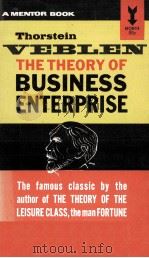
- THE THEORY OF BUSINESS ENTERPRISE
- 1904 THE NEW AMERICAN LIBRARY LIMITED
-

- THE MULTINATIONAL ENTERPRISE
- 1989 MACMILLAN
-

- THE OWNERSHIP OF ENTERPRISE
- 1996 HARVARD UNIVERSITY PRESS
-
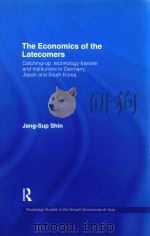
- THE ECONOMICS OF THE LATECOMERS
- 1996 ROUTLEDGE
-
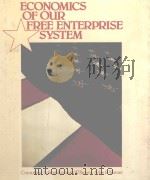
- ECONOMICS OF OUR FREE ENTERPRISE SYSTEM
- 1982 COPYRIGHT
-

- ENTERPRISE LAW OF THE 80S
- 1980 PRODUCED BY THE ABA PRESS
-

- Legal Control of the Multinational Enterprise
- 1983 Kluwer Law International
-

- Business and the Culture of the Enterprise Society
- 1993 QUORUM BOOKS
-

- FINANCING AN ENTERPRISE THE ENTERPRISE VOLUME 1
- 1921 THE RONALD PRESS COMPANY
-
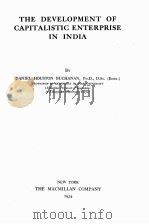
- THE DEVELOPMENT OF CAPITALISTIC ENTERPRISE IN INDIA
- 1934 THE MACMILLAN COMPANY
提示:百度云已更名为百度网盘(百度盘),天翼云盘、微盘下载地址……暂未提供。➥ PDF文字可复制化或转WORD
